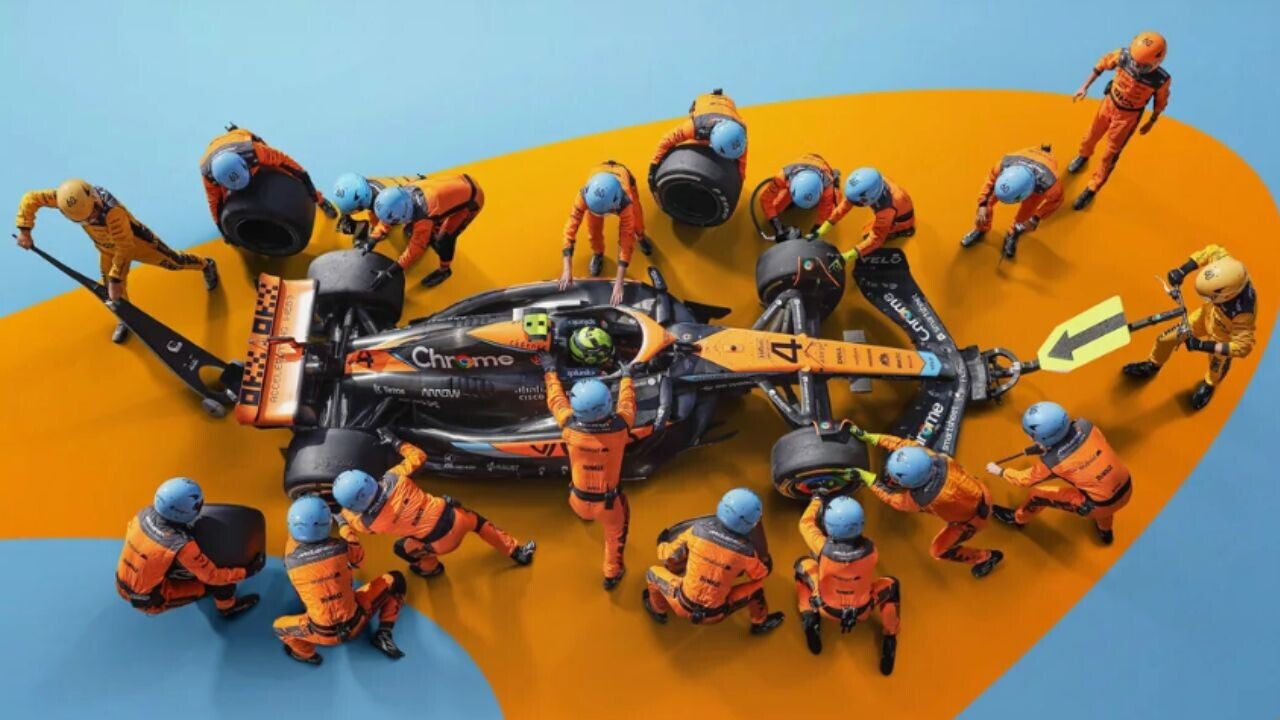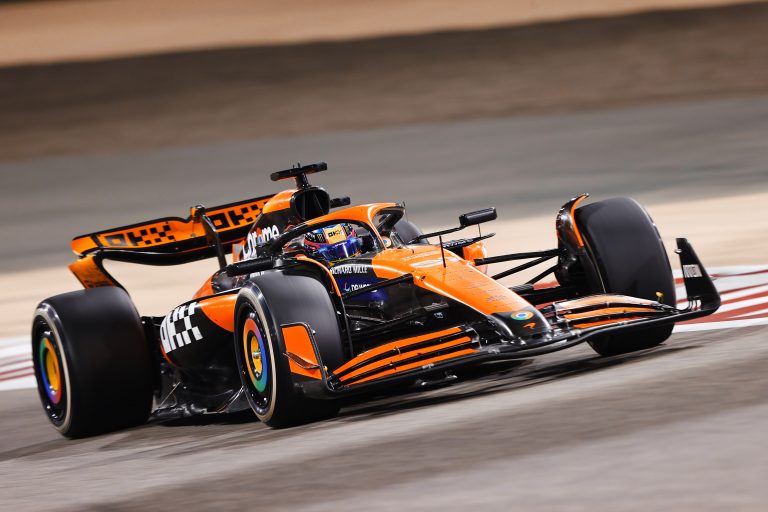
In Formula One, races are often won by slimmer margins than the naked eye can see.
A tiny twist of a steering wheel, a twitchy step on a pedal, a fleeting lapse of concentration: any moment can determine success or failure. Frequently, these moments arrive when the car comes to a halt.
When a driver hears the “box, box” call on their radio, they exit the main track for a pit stop. Instantly, a swarm of mechanics start changing tyres, making repairs, and adjusting settings. Within a few seconds, the vehicle is back in the race with a winning upgrade.
At least, that’s the objective. Good pit stops have been credited for breathtaking victories. But bad ones have been blamed for heartbreaking defeats.
The McLaren F1 team has experienced both extremes. At last weekend’s British Grand Prix, a pit stop mishap led star driver Lando Norris to lose his lead.
The setback stood in stark contrast to the triumph of last year. On lap 27 of the Qatar Grand Prix in October, McLaren fully serviced Norris’ car in a world-record 1.80 seconds.
The rapid turnaround reaped big rewards for the former champions. Having started the race in 10th position on the grid, Norris finished in third place. The result gave McLaren a 500th podium in Formula One.
Norris and the pit crew lapped up the plaudits. But the team was quick to praise another force behind the record: data analytics.
By scanning reams of information, McLaren unearths crucial insights for pit stop strategies.
“Everybody’s doing everything in their power to find milliseconds,” Dan Keyworth, Director of Business Technology at McLaren Racing, tells TNW. “And that’s what makes the difference between winning and losing.”
The data race in F1
A single F1 car has around 80,000 components and 90% of the vehicle will change during a season. To decide these updates, McLaren interrogates hoards of driving data.
For every race, the British team runs an average of 30 million simulations. These tests tap data from computational fluid dynamics (CFD), wind tunnels, high-performance computing, and the drivers themselves.
Through CPD, the team creates a digital twin of their F1 car, which can simulate aerodynamic behaviour. They then model the air flow of individual parts. As a result, engineers can rapidly iterate the design process.
After successful testing in the virtual environment, the part is built in 3D at 60% scale. It then heads for further trials in the wind tunnel.
This generates yet more data. If the results are impressive, the team manufactures the part and installs it in the car. They can then test the impact on pit stops in practice runs.

Once a race weekend begins, each car collects new data from 300 telemetry sensors. Collectively, they cover 100,000 information parameters, from engine levels and fuel loads to gear changes and G-forces. “We’re generating 250 million data points per car per race,” Keyworth says.
After the chequered flag waves, McLaren combines the physical, virtual, and race-world information. Since 2021, the team has run this process through Alteryx, a low-code tool for analytics automation. The final outputs guide the next pit stop strategies.
From the garage to the pits
All of the pit stop decisions are steered by data. F1 teams apply analytics to unearth insights on tyre degradation, performance fluctuations, weather forecasts, and rivals’ speeds.
“We have timing data, we have video, we have human performance information,” Keyworth says. “A vast amount of information makes up a pit stop.”
When the analytics pinpoint an auspicious moment, the car is called in for a service. The pit-crew of around 20 then gets to work.
Three members are assigned each wheel. As they replace the tyres, their colleagues complete rapid fixes and tweaks.
The instant that their work is complete, the driver gets the green light to rejoin the track.
“All of that has to be in absolute harmony to deliver a world record,” Keyworth says.
After the race, each progress of the pit stop enters another analytics round. From the wheel gun RPMs to the car’s release point, every action is a chance to save extra milliseconds.
For Keyworth, the search for milisecond gains never ends.
“Yes, there’s a world record now, but what’s next?” he asks. “We’re always looking for those fine margins.”
Get the TNW newsletter
Get the most important tech news in your inbox each week.





